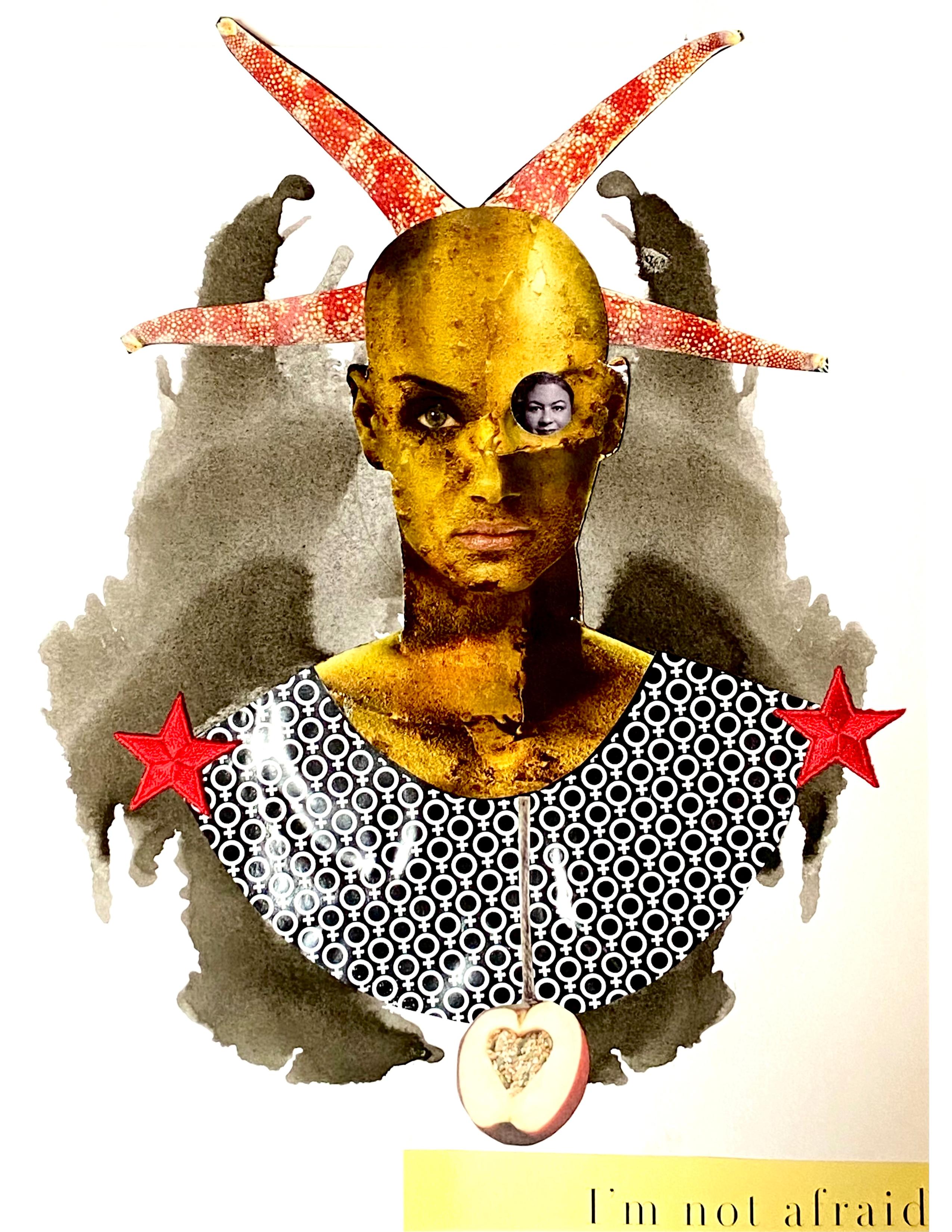
The Warrior (Visual Art)

Gabriela Denise Frank
3 Questions for Gabriela
What was your process for creating this work?
I created this collage during lockdown while taking a class on Jungian psychology and creativity with the brilliant and delightful English artist Eleanor Crook. (Her class was offered through Morbid Anatomy. If you’re into death, mythology, and the occult, this organization is for you.)
We did a lot of inward-looking in Eleanor’s class, which changed my relationship to creativity, self, and art-making. Formally, this piece combines an inkblot (the wings) and a mixed-media collage (images, found text, iron-on patches, a postcard remnant). Her collar is made from an illustration of RBG, who haunts this piece with formidable femininity; her red star epaulets are iron-ons that had been lingering in my art box for twenty-plus years, awaiting the right use; her head is from a postcard from the Egypt Pavilion at the 2010 Venice Biennale; one of her eyes is from Orion magazine.
What is the significance of the medium you chose?
As an artist, I identify as transdisciplinary. Growing up, I was educated in music; I studied literature in college, then went to design school. From my mid-thirties to early forties, I studied creative writing and got into sound work and audio recording. To me, it’s all storytelling. It’s all entangled, interrelated, cross-pollinating. Nothing is “pure”. These days, even my writing isn’t straight narrative prose: it’s fragmented, segmented, achronological, hybrid.
Within visual art, I work with ink, pencil, paint, photography, and collage, the latter of which is the most satisfying because everything is a possible medium. I love chimeras. “The Warrior” is an example of such an assemblage. It started with an inkblot, which I came to identify as wings as her body came together. Her wings are both shelter and a source of uplift. “I’m not afraid,” she says, of flying into the unknown.
What is the significance of the work to you?
“The Warrior” resulted from an exercise in which we looked into the Shadow Self. My Shadow was a task master/drill sergeant/warrior—someone who could whip wayward troops into order. It spoke to my punishing work ethic: all work, no play. I was afraid of being lazy, of failure, of being “behind”—of making bad art.
Eleanor encouraged us to personify our archetype energies so that we could engage with them. “The Warrior” helped me see how my struggles with self-worth manifested in a choke-hold on creativity: I was bent on acceptance and making my art process “productive” rather than letting inspiration do its thing. In “The Warrior” I saw the how leadership could mean vision rather than dominance, and feminine potency didn’t have to equal control. A warrior can be a protector, not merely an aggressor. She helped me have a different internal conversation around how and why I make art.
Gabriela Denise Frank is a transdisciplinary storyteller, editor, and educator living in the Pacific Northwest. Her work has appeared in True Story, HAD, Hunger Mountain, Bayou, Baltimore Review, The Normal School, The Rumpus, and elsewhere. The author of "Pity She Didn't Stay 'Till the End" (Bottlecap Press), she serves as the creative nonfiction editor of Crab Creek Review. www.gabrieladenisefrank.com